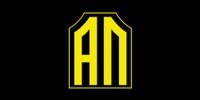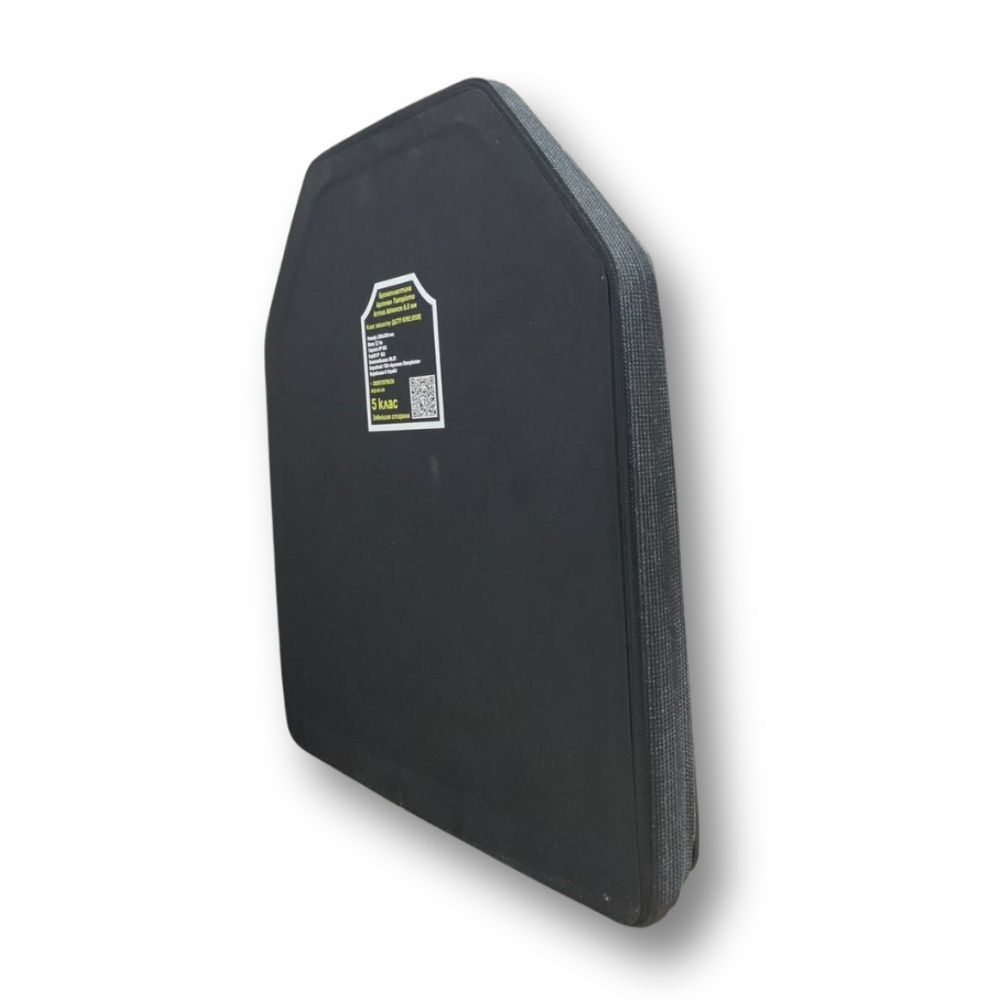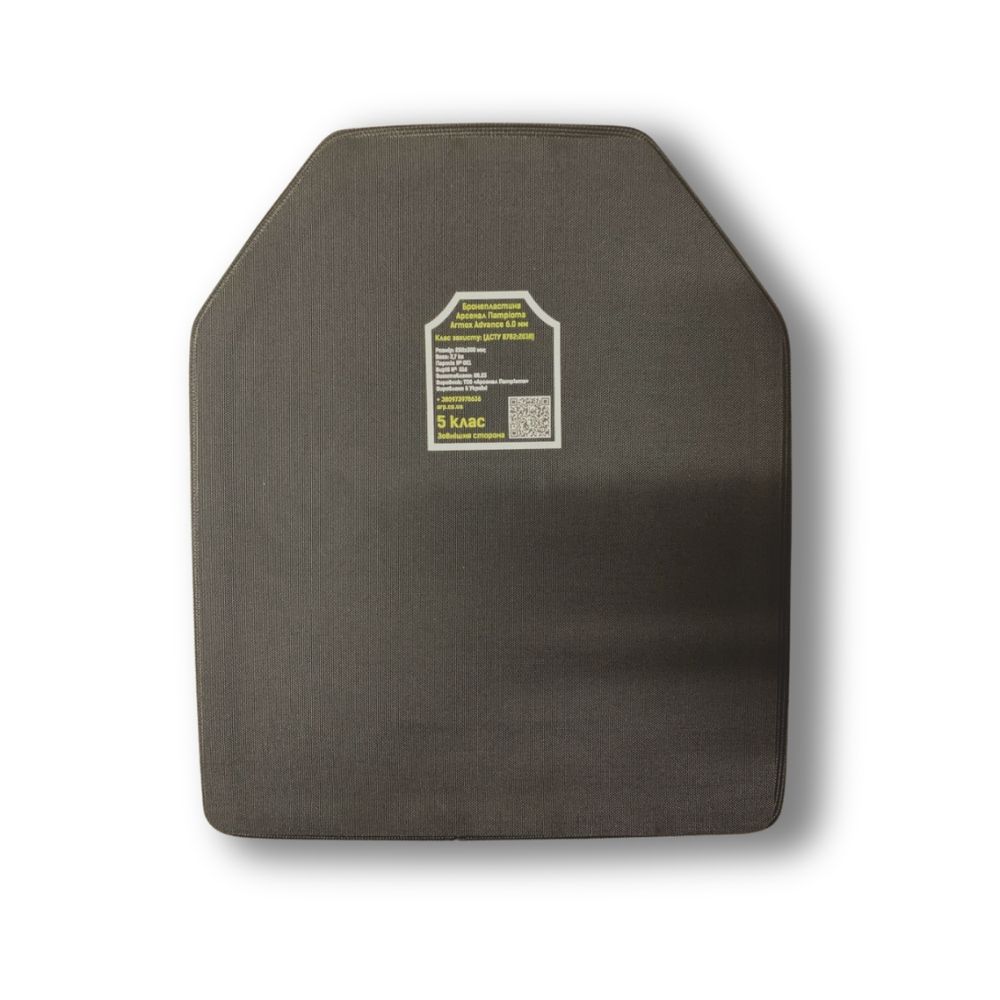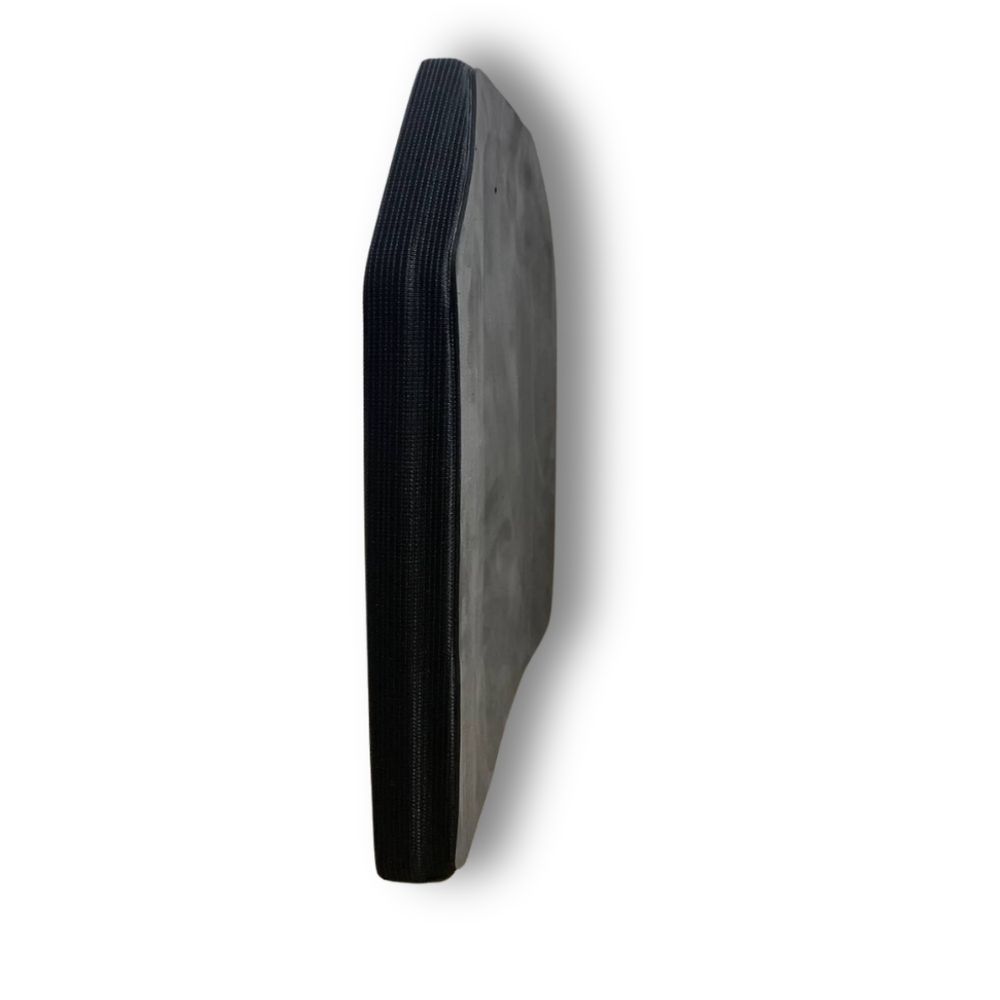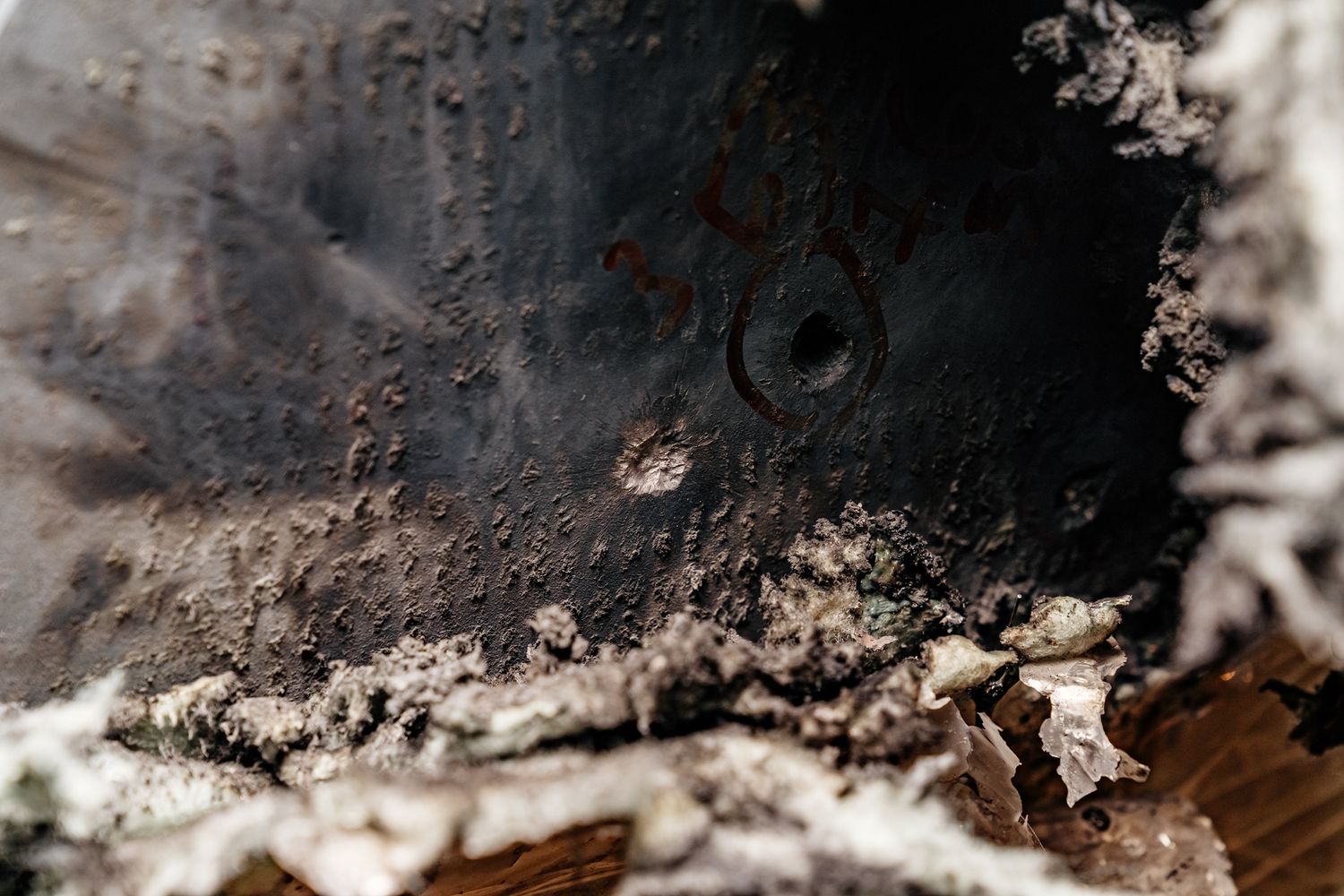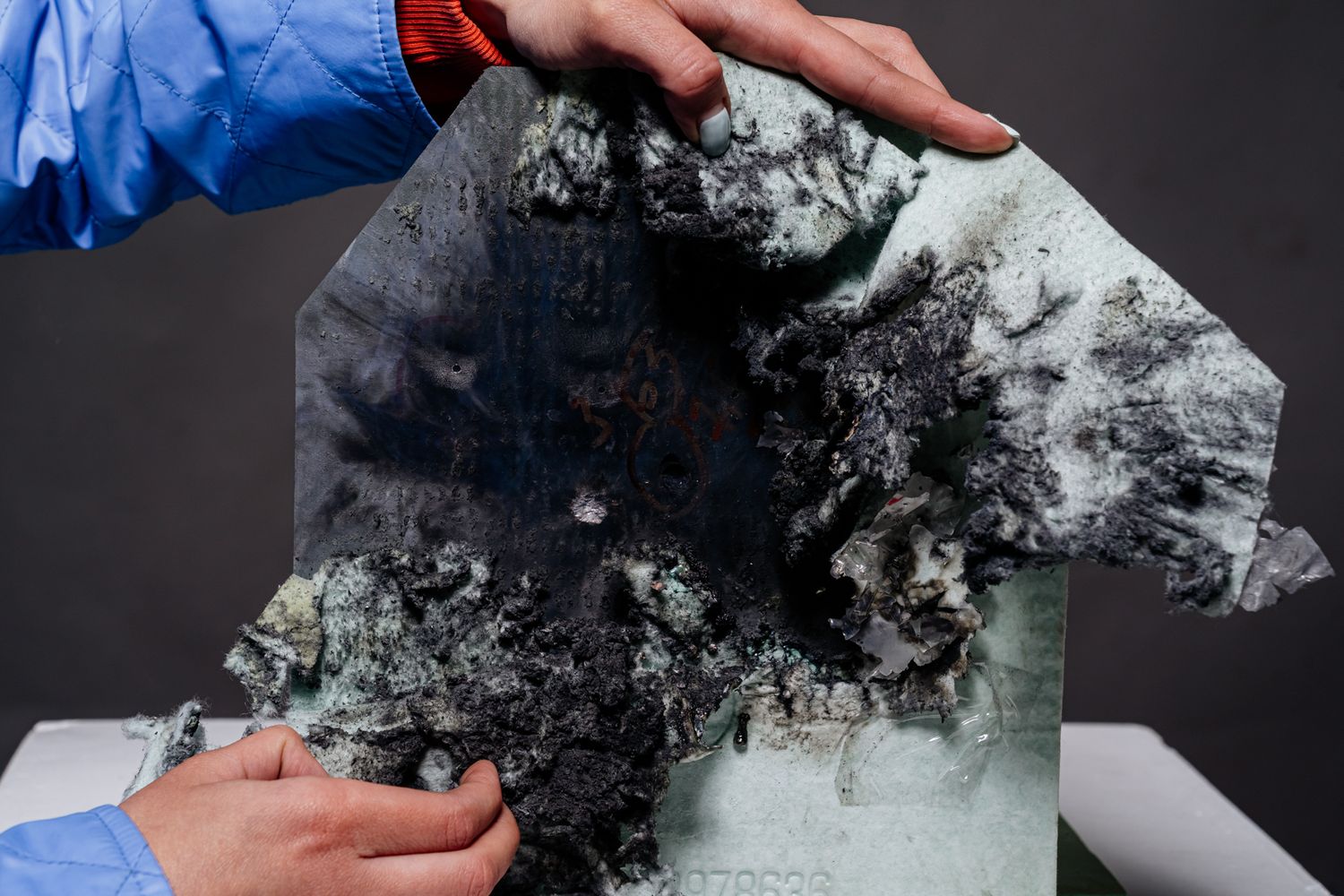5 level "ultra light" armor plate
Peculiarities
5 level "ultra light" armor plate provides maximal protection with 3.8 kg of armor steel. It is suitable for those who are under a sniper threat and those who do not need to move a lot.
Armor Steel
The Armox Advance armor steel used for these plates is from the best manufacturer in the world - the Swedish SSAB with hardness of 58-63 HRC and nominal thickness of 6 mm! The correct processing of this steel allowed us to produce plates that meet level 5 of the State Standard of Ukraine.
Anti-fragment capabilities
We use the lightest materials developed by ourselves to counter the ejection of the core and fragments of the bullet shell. The front part of the armor plate is covered with a special Ukrainian-made ballistic felt, which we additionally laminate with a special layer of PVC film to protect the plate from moisture and water. The felt is cut in accordance with the exact plate dimensions and applied under a special method of several-hour pressing. This allows the coating to firmly adhere to the plate and not fly away even after 6 shots.
But that's not all. We are always moving forward, that's why we added our unique development – side facing - to our plates. This material has density of 800 kg/m3! We press each plate with facings in a special device, where we leave it for an hour and a half. This method ensures that the felt adheres to the metal and makes them work as one, making it nearly impossible for the core to fly out from the side when hitting the edge of our armor plate.
Reducing the blunt force trauma
On the back of every plate, we install a softening damper made of EVA material that is 8 mm thick and has density of 80 kg/m3. Unlike a standard damper made of foamed polyethylene or rubber with density of 30-35 kg/m3, our damper almost does not deform over time and shows better results in reducing the blunt force trauma.
5 level "ultra light" armor plates have no backface deformation.
Form and dimensions
An armor plate has standard dimensions of 25х30 cm. The cut angles do not prevent movement and enable you to use firearms in a comfortable way.
State Standard of Ukraine, certificates and tests
Each of our plates belongs to a certain batch, has its own unique number and production date. Each batch of armor plates is submitted to a certified laboratory, where they are checked for compliance with the 8782:2018 State Standard of Ukraine under normal conditions. According to the results of the tests, a certificate for the batch is issued for a period of 6 months. A test report is attached to each certificate. You can find these documents on the webpage of each product.
According to the State Standard of Ukraine, each 5 level "ultra light" armor plate can retain the following:
-
Dragunov sniper rifle, 7,62-mm rifle round 57-Н-323с (steel core light ball) in a steel shell with steel core
-
Bullet velocity of 850+/-15 м/s.
-
АКМ 7,62х39, bullet 57-БЗ-231 (armor-piercing incendiary) in a steel shell with steel heat-treated core, bullet velocity of 745+/-15 м/s.
*Since 1989, without changing the appearance and marking, instead of steel core light ball, a round with CT-M2 bullet with a core hardness of 65 HRC is produced and is similar to the B-32 bullet level 6.
It can additionally retain the following:
- АК-74, 5,45-mm round, 7Н22 bullet
- АК-74, 5,45- mm round, 7Н6М bullet.
Difference from ceramic plates
Any ceramic plate has two disadvantages:
-
It is disposable and needs to be replaced immediately after the first shot. This is exactly what happens in the world practice. There are always spare ceramic plates for each fighter. Plates made of armor steel can retain several shots and do not require immediate replacement.
-
Backface deformation of a ceramic plate is much greater than that of an armor steel plate. Using ceramics without a ballistic vest with a package will likely cause a large blunt force trauma that will result in a broken rib or even damaged internal organs. Plates made of armor steel do not have such backface deformation and transmit the bullet energy over the entire plate, and not over a certain point. Hence, they have better indicators for reducing injuries.
